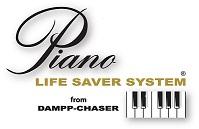A-440: The international pitch standard set by musicians in 1925. This means that when you play the first A above middle C on the keyboard it is at 440 hertz (hz). That way when you hear this and other notes played on the radio or other instruments they are at the same pitch for each note.
Action: An Assembly holding all of the moving parts like Hammers whippens, damper, and jacks. Includes the keys on grand pianos.
Baby Grand: Less than 5’8” long
Beats: The sound that is produced when two strings are vibrating at different hertz speeds. Example Play F-3 and A-3 together and listen to the beat speed. It should be about 7 beats per second. Now play F-3 and A#-3 they should be almost pure not even one full beat per second . Or about 4 beats in five seconds.
Cents: A measurement used for pitch while tuning. Mathematically each note on the keyboard is 100 cents. For more about this click here.
Concert Grand: Most are about 9’ long
Console: 36” to 45” tall
Dampers: Each key except in the high treble has a felt damper to prevent the string from sounding or vibrating until the note is played . As the key moves down it lifts the damper. The notes below the high treble would continue to sound for as much as 8 to 15 seconds depending how far down you play and the quality and condition of the soundboard and instrument. This is called sustain.
Double-Striking Hammers: When the hammer bounces on the strings twice or more when played. Caused by worn action parts and or action out of regulation .
Down Bearing: The amount of downward pressure of the strings on the bridges to transfer the vibration of the strings to the soundboard.
Equal Temperament: The smooth and even tuning as possible of the temperament octave .
False Beats: When a single string has a pulsation in the pitch of the tone. (not good)
Grand: From 5’9” long up to 6’10” long
Half Step: The distance between any two adjacent keys, sometimes called a semitone.
Hertz: Named after Physicist Heinrich Hertz. The number of cycles per second of any given tone or sound wave.
Pitch: The frequency of the vibration or hertz. The faster the speed of vibration the higher the pitch.
Pitch Raise: When pianos go untuned for a long time the pitch drops. Anytime the pitch drops more than 10 to 20 cents or a quarter step it requires a pitch raise before the piano can be fine tuned. Most pianos when at A-440 pitch have about 30 to 40 tons of string tension on the frame & plate. A piano that is even a quarter step flat will add 6 to 9 thousand pounds of tension back on the plate when pulled up to A-440 pitch. Even though the frame and plate are very solid and strong this is enough to cause them to react to the added tension. Causing the pitch to drop back down. Most of the time if the piano and strings are in good condition you can over pull the pitch of each string by a percentage that it was flat and by the time you get to the top the middle will be close to A-440. Sometimes strings tend to break or false beats show up making it very important to have your piano tuned and serviced at least once per year.
Regulation: The fine adjustments to each key and action parts in the piano.
Semi Concert Grand: 6’11” long to 8’5” long
Sostenuto pedal: The center pedal on most grand’s depress right after playing any note with a damper and it will hold the damper open on that note until you released the pedal. Very seldom used.
Spinet: The shortest vertical piano. Most often very poor sound and touch. Under 35” tall.
Studio: Used mostly in schools from 46” to 52” tall. Will deliver the best tone for a vertical piano due to the strings and soundboard are as big as a small or medium sized grand piano.
Sustain: The amount of time a note will sound when played and held down. The sustain time drops the higher up the key board you play. That is why the upper high treble notes do not have dampers. If a piano has poor sustain it might have problems with the soundboard crown and down bearing. Sustain times vary from piano to piano most are from 15 to 8 seconds in the middle and lower notes.
Upright: Sometimes called an Upright Grand Very large and heavy vertical piano built up until the late 30s.
To Menu





